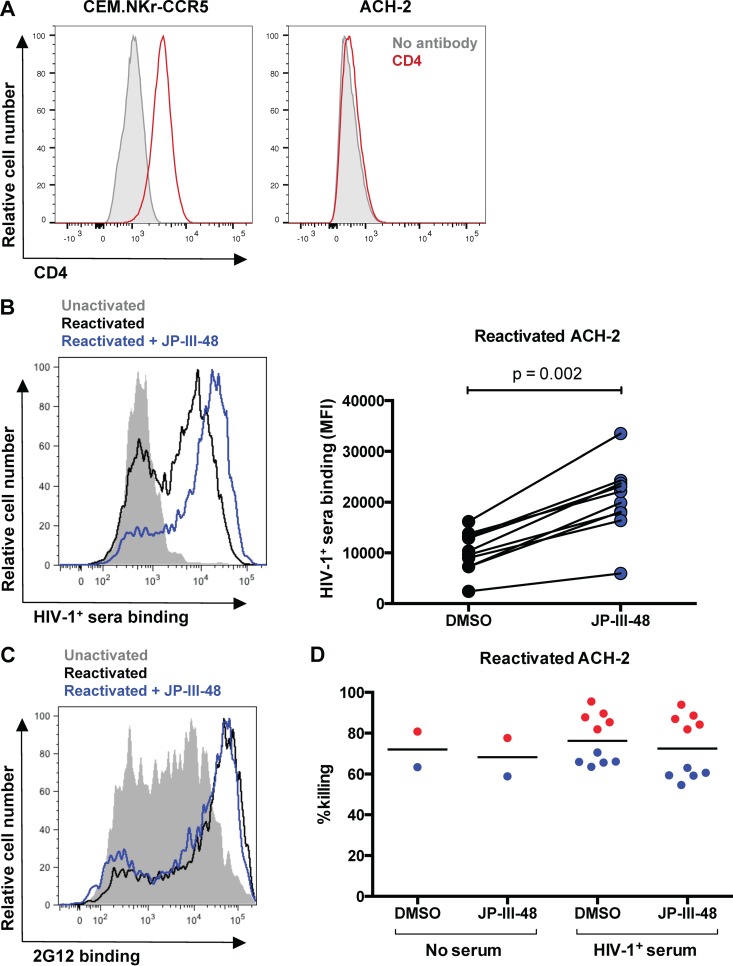FIG 3.
The CD4mc JP-III-48 enhances binding of HIV-1+ sera to reactivated ACH-2 cells but does not enhance ADCC. (A) Surface staining for CD4 expression on CEM.NKr-CCR5 cells and ACH-2 cells. (B) The effect of CD4mc JP-III-48 on the binding of HIV-1+ sera from 10 donors to ACH-2 cells was assessed via flow cytometry. On the left is a representative plot of HIV-1+ sera binding to unactivated ACH-2 cells (shaded gray), reactivated ACH-2 cells (black line), and reactivated ACH-2 cells in the presence of JP-III-48 (blue line). The graph on the right depicts the level of HIV-1+ sera from 10 donors binding to reactivated ACH-2 cells in the presence of JP-III-48 or the vehicle (DMSO). (C) To determine if CD4mc affects binding of antibodies to non-CD4i epitopes, we assessed binding of 2G12 to unactivated ACH-2 cells (shaded gray), reactivated ACH-2 cells (black line), and reactivated ACH-2 cells in the presence or absence of JP-III-48 (blue line). (D) The effect of CD4mc on ADCC against reactivated ACH-2 cells was assessed using a flow cytometry-based infected cell elimination assay (28, 33). Effector PBMCs from 2 healthy donors (depicted in red and blue) were incubated with reactivated ACH-2 cells in the presence or absence of HIV-1+ sera (1:1,000 dilution) from 10 donors (5 for each PBMC donor). Incubations were performed in the presence of JP-III-48 or the vehicle (DMSO). The data in this figure were analyzed using the Wilcoxon signed-rank test, and the black lines represent the medians of each group.

